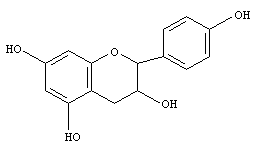Ajay, M., Chai, H.J., Mustafa, A.M., Gilani, A.H., Mustafa, M.R. (2007). Mechanisms of the anti-hypertensive effect of Hibiscus sabdariffa L. calyces. Journal of Ethnopharmacology, 109, 388-393.
Fakeye, T.O., Adegoke, A.O., Omoyeni, O.C., & Famakinde, A.A. (2007). Effects of water extract of Hibiscus sabdariffa, Linn (Malvaceae) “Roselle” on excretion of diclofenac formulation. Phytotherapy Research, 21, 96-98.
Herrera-Arellano, A., Miranda-Sanchez, J., Avila-Castro, P, Herrera-Alvarez, S., Jimenez-Ferrer, J.E., Zamilpa, A., … Tortoriello, J. (2007). Clinical effects produced by a standardized herbal medicinal product of Hibiscus sabdariffa on patients with hypertension. A randomized, double-blind, lisinopril-controlled clinical trial. Planta Medica, 73, 6-12.
McKay, D.L, Chen, C.-Y. O., Saltzman, E., & Blumberg, J.B. (2010). Hibiscus sabdariffa L. tea (tisane) lowers blood pressure in prehypertensive and mildly hypertensive adults. The Journal of Nutrition, 140(2), 298-303.
Morton, J.F. (1987). Fruits of warm climates. Florida: Florida Flair Books.
Mozaffari-Khosravi, H., Jalali-Khanabadi, B.-A., Afkhami-Ardekani, M., Fatehi, F., Noor-Shadkam, M. (2009).The effects of sour tea (Hibiscus sabdariffa) on hypertension in patients with type II diabetes. Journal of Human Hypertension, 23, 48-54.
Nivsarkar, M., Patel, M., Padh, H., Bapu, C., & Shrivastava, N. (2005). Blastocyst implantation failure in mice due to “nonreceptive endometrium”: endometrial alterations by Hibiscus rosa-sinensis leaf extract. Contraception, 71, 227-230.
Ojeda, D., Jimenez-Ferrer, E., Zamilpa, A., Herrera-Arellano, A., Tortoriello, J., & Alvarez, L. (2010). Inhibition of angiotensin converting enzyme (ACE) activity by the anthocyanins delphinidin- and cyanidin-3-O-sambubiosides from Hibiscus sabdariffa. Journal of Ethnopharmacology, 127, 7-10.
roselle. (2010). In Encyclopædia Britannica. Retrieved November 28, 2010, from Encyclopædia Britannica Online: http://www.britannica.com/EBchecked/topic/509866/roselle
Wahabi, H.A., Alansary, L.A., Al-Sabban, A.H., & Glasziuo, P. (2010). The effectiveness of Hibiscus sabdariffa in the treatment of hypertension: A systematic review. Phytomedicine, 17, 83-86.
Additional Links
Registered dietician discusses effects of Hibiscus tea on hypertension:
Dr. Diane L. McKay discusses the results of her study:



